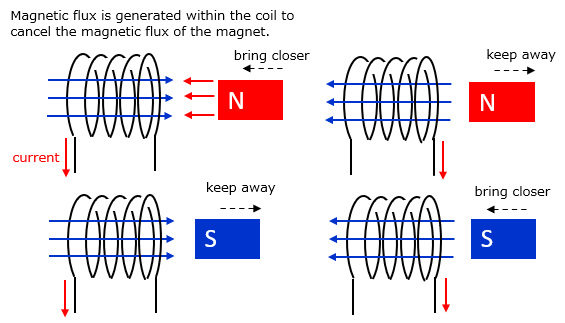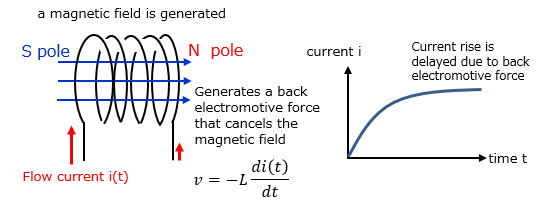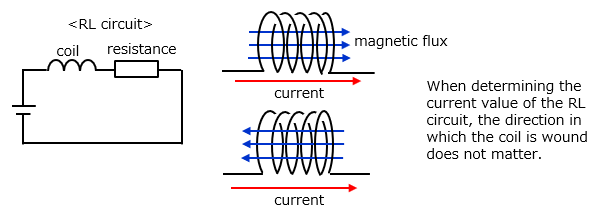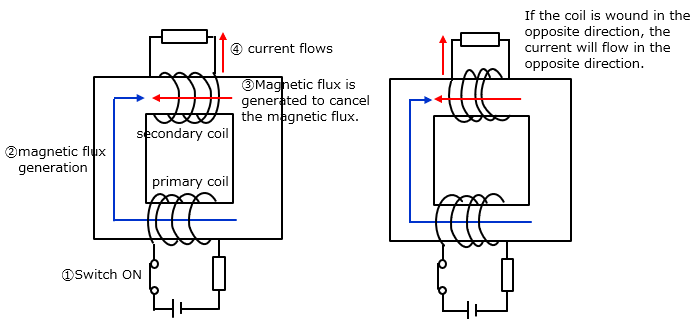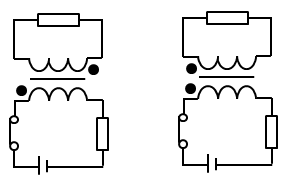What is electromagnetic induction? |
|||||||
|
・In Japanese
■What is electromagnetic induction?
When a magnet is brought close to or moved away from a coil, magnetic flux is generated within the coil to cancel out the magnetic flux of the magnet, and when magnetic flux is generated, an electric current is generated.
This phenomenon is called electromagnetic induction, and the generated current/voltage is called induced current and induced electromotive force.
According to Lenz's law, current flows in the direction of the index finger of the right hand when the thumb grips the coil in the same direction as the magnetic field lines.
■Self-induction
When current flows through the coil, a magnetic field is generated, but when the current begins to flow, a back electromotive force is generated to prevent the generation of the magnetic field.
This is called self-induction, and the back electromotive force at this time is called self-induced electromotive force.
However, this does not mean that a back electromotive force is generated until the current reverses direction.
Also, when a current is flowing and a magnetic field is generated, the coil has the properties of a magnet. ■Mutual induction
With the coil wrapped around the iron rod as shown below, a current is applied to the primary coil.
Then, magnetic flux is generated from the primary coil, but magnetic flux is generated from the secondary coil to cancel that magnetic flux.
When magnetic flux is generated, current also flows to the secondary coil. This is called mutual induction.
However, since magnetic flux is generated in the secondary coil only when the magnetic flux in the primary coil changes, current does not flow all the time.
|
|
|||||
